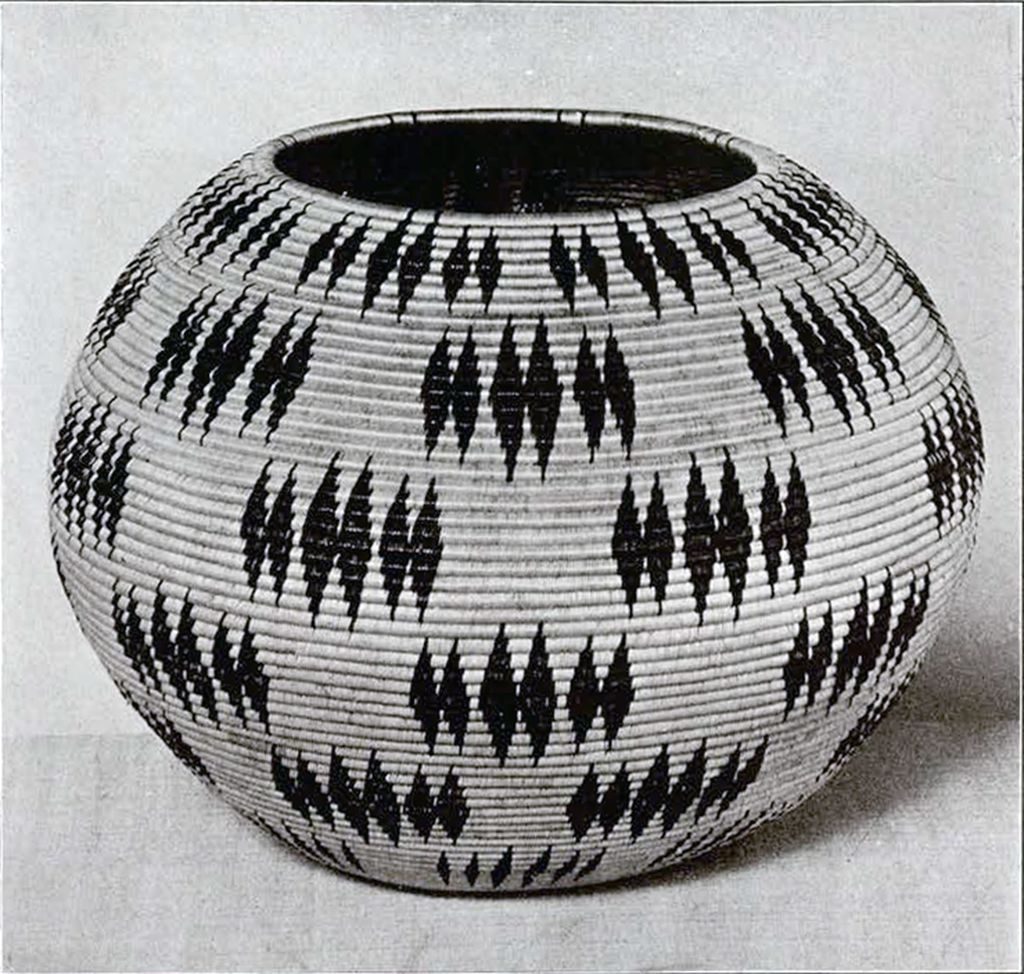The American Section of the Museum has been fortunate lately in receiving gifts of several important collections. The latest accession is a collection of North American Indian baskets, blankets, beadwork and other representative articles of Indian craftsmanship which has been presented by Mrs. Richard Wain Meirs. This collection will be known in the future as The Richard Waln Meirs Collection in honor of the late Mr. Meirs.

Museum Object Number: NA8800
Image Number: 12761

Museum Object Number: NA8802
Image Number: 12760
Although the beadwork and the blankets exhibit many interesting examples of design, the artistic and technical properties of the basket collection which numbers about two hundred specimens, are far greater. Beginning with the Eskimo of Northern Alaska, the collection embraces the Aleutian Islanders, Southeastern Alaska and the Pacific Coast tribes, down to California. There are also many fine examples of Apache, Navajo, Pima and Hopi baskets, each group exhibiting the decorative system and symbolism which belong to the tribe. There is one group, however, that claims special attention and gives rise to unbounded admiration as much for its beauty of form as for the technical perfection and fineness of weave exhibited in each specimen. The group comprises about twenty baskets made by the Washoe Indians of Nevada. This small tribe, numbering at present not more than two hundred individuals, lives in the vicinity of Carson City, Nevada, and speaks a language which is different from that of its neighbours. In general these Indians have not been remarkable either for industry or for artistic skill; both these qualities are nevertheless exhibited to an extraordinary extent in their basketry. Two examples are selected here for illustration. The first is one which was made by a woman who is still living and whose name is well known in that part of the country for her basketwork. The one example of her work in the Richard Wain Meirs Collection exhibits her skill and her artistic feeling in a marked degree. The coiled weave of the baskets is so perfect that it is impossible to detect in any part the slightest imperfection. The care with which the materials have been selected and prepared is of the same high order. The white parts are made of willow, the black of bracken and the red of redbud. The decoration is made by a series of groups of six diamond shaped figures, each of which is dark red in the centre and black on the border. According to the native idea these represent groups of chiefs assembling and therefore the basket has been called the Assembly Basket. This very perfect and very wonderful example of basket weaving proves that among the elder Indians neither skill in craftsmanship nor true feeling in artistic matters is lacking.
The other Washoe baskets, although not so fine, show similar qualities and constitute a well defined group of basketry which is unsurpassed for good workmanship, beauty of shape, and well applied decoration.
G.B.G.

